Cycling Katavi National Park
Although we enjoyed seeing the tiny creatures on the journey so far, it was the larger creatures we had to be wary of for the next part our journey.
We stayed a night at the Riverside Camp just on the northern fringe of the Katavi National Park and spent a few hours sitting on the riverbank in the company of their resident hippos.
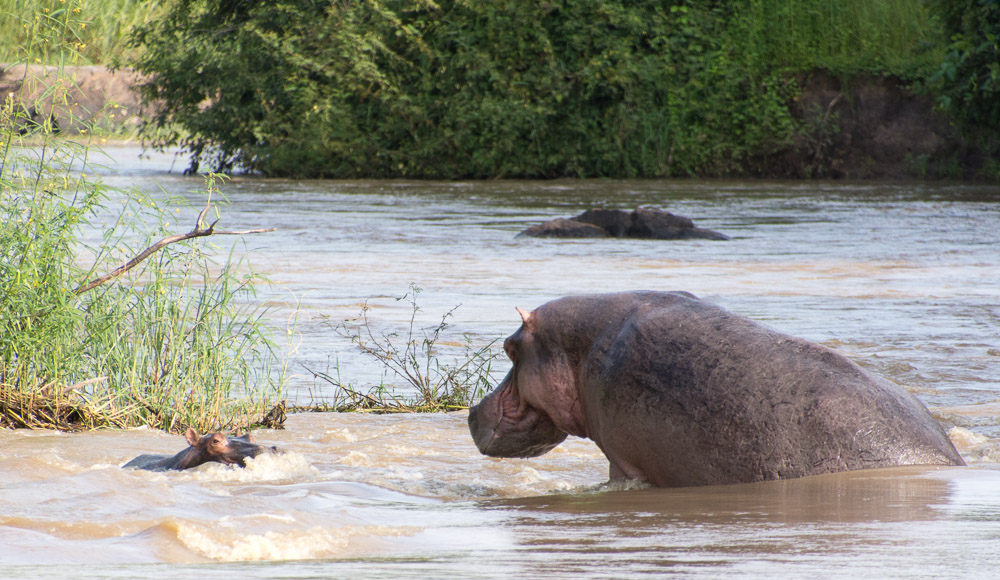
Hippos at Riverside Camp, Katavi National Park, Tanzania: A Glimpse into the Wild.
The Katavi National Park is Tanzania’s third largest national park and it’s also its most remote. The park is full of wild animals including elephants, buffalos and lions. The main road in the region slices straight through park and cycling through the Katavi National Park isn’t strictly allowed. But, it’s not strictly prohibited either. We did some research and got in contact with Nicolas Marino a cyclist who’d blogged about crossing the park in 2015. In Nico’s reply to us he strongly discouraged us from taking the park on firstly due to the tsetse flies and, secondly, the very real danger of cycling in the presence of wild animals. He even told us how stubborn he had been when he’d cycled across and avoided warnings not to do it (mainly due to the flies) and urged us to listen. It seems, however, that cycle tourists all have a stubborn nature.
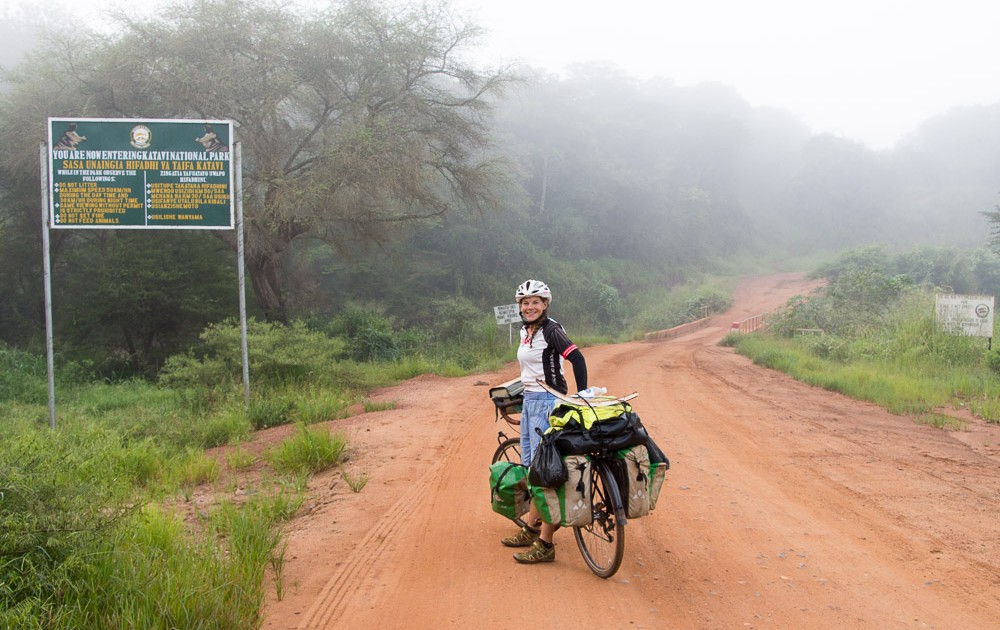
Cycling through the Ktavi National Park isn’t strictly allowed. But, it’s not strictly prohibited either.
The crossing of the park was only 60km. And to get a lift would have set us back over USD$150. We figured that the flies “couldn’t be that bad” and lions tend to hunt at night so we decided to give it a go. How wrong we were.
We were up early and crossed into the unfenced park at 7am – before any rangers could take their post at the entrance. Within moments we saw a huge herd of impalas and baboons sauntered across the road in front of us.
But, very soon, the tsetse flies arrived in their hundreds. Tsetse flies are armour-plated biting machines. They landed on every bit of our bodies and bit any exposed skin and through even through our socks and gloves. They got so bad that, even though it was over 30°C that day (of course it had stopped raining that day!), we had to don our waterproof jackets to prevent them from biting through our shirts. We controlled our bikes with one hand whilst swatting the stubborn insects away with the other.
No matter how fast we cycled, the flies landed and bit. The extra effort we put into the pedaling made us hotter. We sweated buckets under our waterproofs and we were reluctant to stop to top up our water because we would get mobbed.
In short, they made our lives a complete misery and we were dehydrating fast in the waterproofs. But at least they took our minds off the larger creatures that lurked in the undergrowth.
From the road we saw a huge herd of zebra and I even saw a couple of giraffes before they ran into the trees.
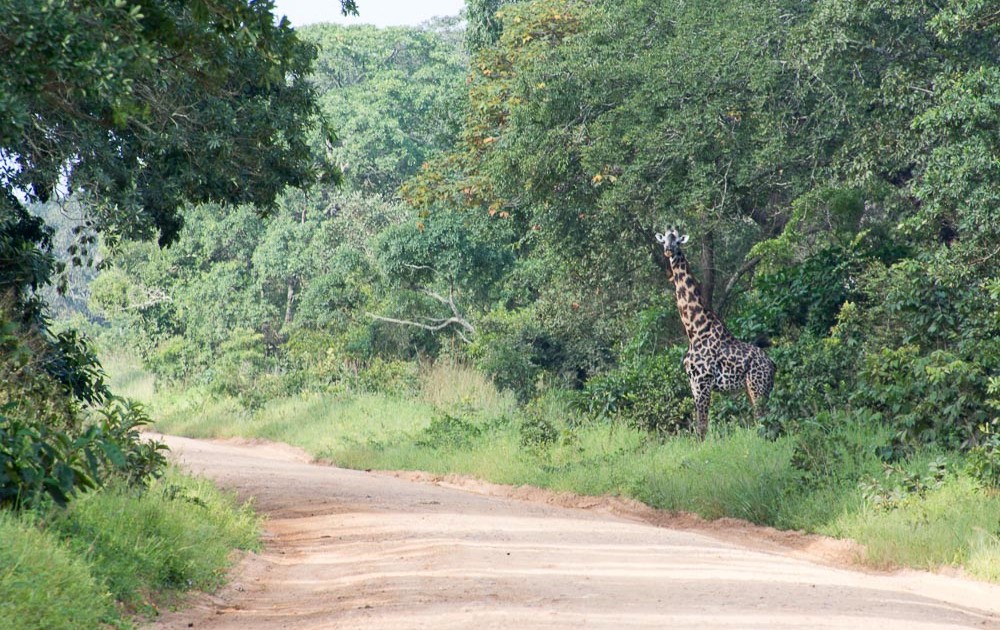
This giraffe stuck his neck out to say hello to the cyclists crossing the Katavi National Park
Then, at the side of the road, we saw huge footprints from some very big cats. Our heartbeats quickened as we realised these footprints were very fresh and that lions were near. We stopped for the quickest of photos then got back on the bikes and followed the footprints for around 8km until they veered left off the road.
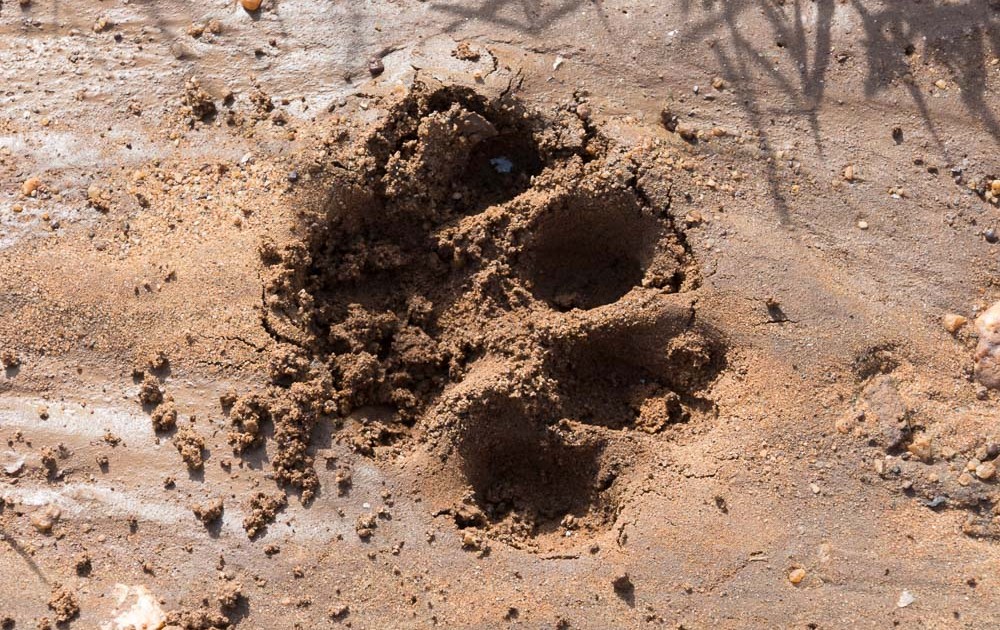
Lions are about!
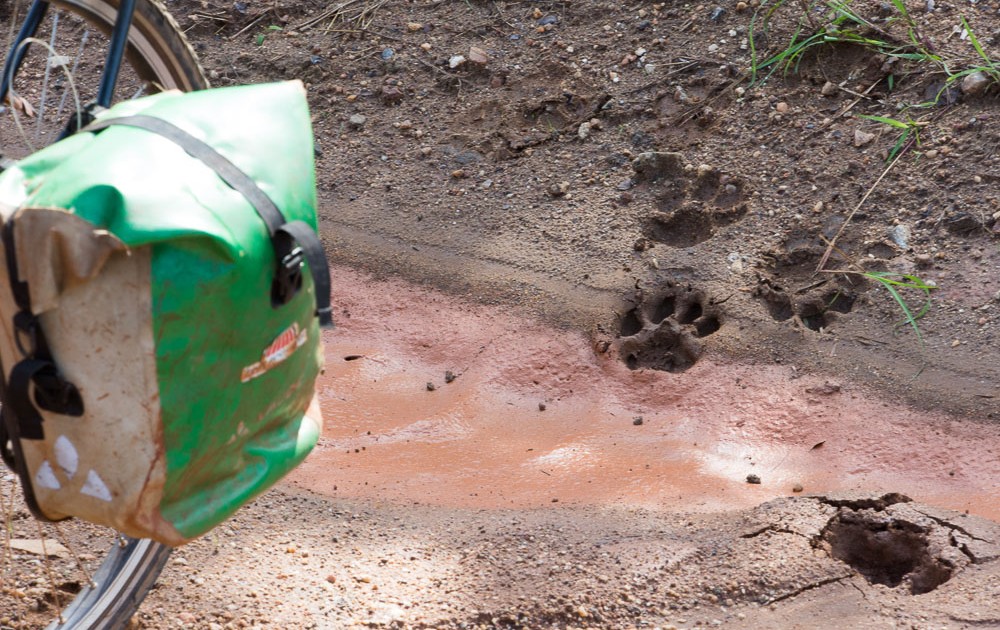
We followed the lions’ footprints for a good
It was a good 20km after the park that the flies gradually petered out. But the effort put into cycling fast through the hostile Katavi National Park in waterproofs had taken it out on us and we were both massively dehydrated and exhausted. We limped to Chisi where we filled our two 10 litre water bags from the village water pump and found a wild camping spot just off the road a few KM further south.
After such a challenging day it was a delight to sit back under the stars and sip a cup of tea whilst watching fireflies streak across the sky tracing their paths with their intermittently glowing bodies.
For two more days we struggled along the bumpy earth road. 35km before Sumawanga we reahed the crest of a hill and the sight before us took us by surprise. A brand new road had been carved through the countryside. Like a river of molten lava it was unsympathetic to the environment and left nothing in its path as it tore through woods and carved deep gashes through hillsides. For two weary cyclists it was like looking at heaven, but it was a sight that would have given Swampy a coronary. But, where there’s a coronary, there’s a bypass, and we were overjoyed to see this ribbon of Tarmac nirvana skirting the villages and snake away from us into the distance.
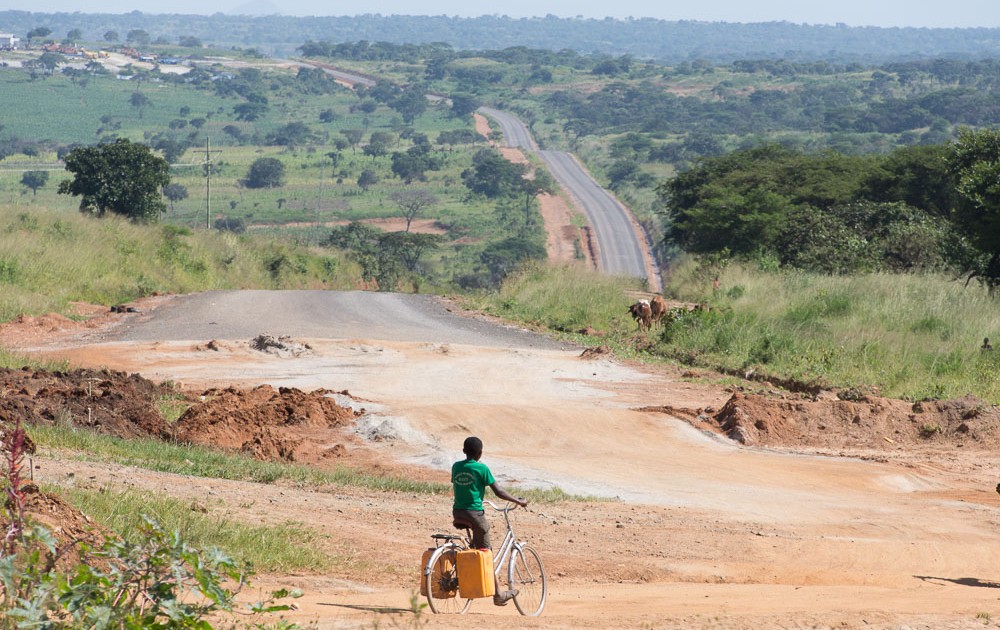
The beautiful sight of a brand new tarmac road
This symbol of economic progress also meant that we could make better progress too. And we were overjoyed with the knowledge that we wouldn’t see another dirt road again until we reach Namibia.
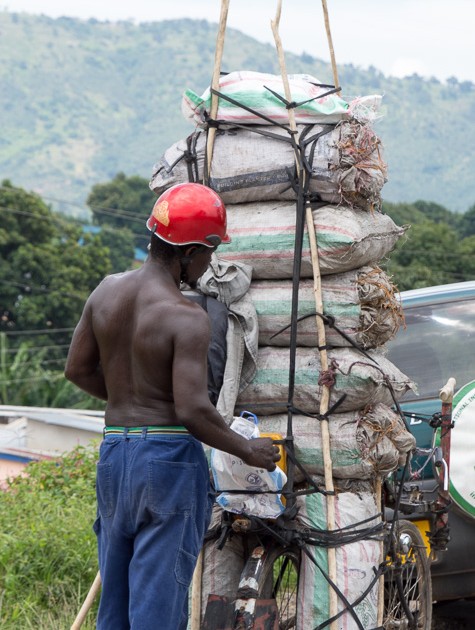
One of the more impressive bicycle loads. We cycled past this guy pushing this insane load up a very steep 2km hill into Mbeya
Our time on the road along the west of Tanzania has been one of the toughest sections of our route so far. The condition of the road, weather, remoteness and physical hostility of the region has taken its toll to the extent that we needed a break. We found a cheap flight from Mbeya to Dar es Salaam where we are now taking a little break. We are incredibly grateful to Ashley and Livi for hosting us in their lovely home by the sea. We spent our first night in Dar sitting by the sea eating fresh seafood and sipping cool, crisp wine. After a few more days like this we’ll be braver, wiser and more optimistic for the journey ahead into Zambia and beyond.


